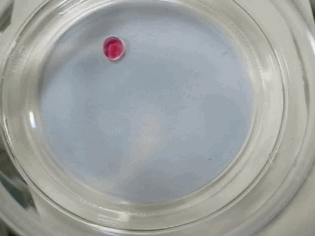The Myth Of Scientists Creating “Protocells”
It’s possible you’ve run across articles in the media or elsewhere making bold statements about scientists who have allegedly created “prototypes” of cells from the early earth. Here’s one from Chemistry World making this claim: “Key Riddle of Life’s Origin May Be Answered By Primitive Protocells That Can Divide” Or, perhaps you’ve seen videos like this one:
Watch the first 7 minutes of this video. It comes from a 2011 TED talk in London. The speaker presents a compelling story about how the first cells might have formed on the early earth. As always, feel free to watch the remainder of the video if you have the time. He makes what appears to be a reasonable case.

Those Look Like Scientific Advances, So What's The Problem?
These articles and videos make a compelling case for showing how scientists are making major progress in explaining the origin of life. But there’s a problem: they are highly misleading. Perhaps you’ve already skipped past the dazzle of a TED talk label and past the use of simple, well known chemistry demonstrations to wonder about reconciling these simple explanations with all the depth and complexity shown in the other articles in this section. If so, you’re on the right track. If not, consider quickly reviewing the conclusions from the other articles in this God Created Life thread. Then compare the simplicity shown in the video with the complexity found in these articles.
How Are These Articles and Videos Misleading?
While it’s nice to believe “we got this”, the reality is science has no clue how life began. These articles and videos perpetuate the myth that scientists understand the general framework for how the first cell was created and all that’s left is crossing the “t’s” and dotting the “i’s”. This is not at all the case.
Let’s revisit the video of Dr. James Tour that we first saw in Beginning To See The Hand Of God In The Origin Of Life but look at a different segment from his talk. His candid and frank assessment of protocell research is refreshingly honest. While you’re watching this next segment, keep in mind that Dr. Tour is a Professor of Chemistry, Computer Science, Material Science and Nano Engineering at Rice University. He’s a synthetic organic chemist with more than 700 research publications, 130 patents, and many prominent awards including the Feynman Prize, NASA Space Act Award and Arthur C. Cope Scholar Award. He was also named one of the top 10 chemists in the world by Thompson Reuters.
Watch ~11 1/2 minutes of this video from James Tour, starting at 26:45, to get the straight story about protocells (through 37:30). Be sure to watch the “prototurkey” analogy at the end of this segment. It puts this topic in proper perspective and is also fairly amusing.
Dr. Tour’s full talk is brilliant but the video is long – about an hour. Watch the whole thing if you can possibly find the time! It’s time well spent! Dr. Tour is a practicing scientist so techy jargon is natural for him. Don’t worry about that, you’ll get the gist.

Conclusions From This Segment Of The Video – 26:45 – 37:30
- Amino acid strings don’t hook themselves together – no one knows how this is done
- Nucleotides (genes) – nobody knows how they hook themselves together without enzymes that we have today. There were no enzymes on early earth
- Protocell research: Misleading the press and laypeople with pure chemicals doing well-known chemical processes and then calling the results protocells
- “All garbage”
More Conclusions From This Video Segment
- There are 40,000 different lipids in a cell membrane (!)
- Experiments use one – inside and out
- Outside lipids different than inside ones
- No one knows how this was done
- Internal components (nucleus, mitochondria, etc) have different lipids
- Different bilayer membranes than in the cell wall or elsewhere
- No one knows how this was done
- Pore complex – regulate certain things in and out
- Very complex; cell explodes if ion concentration is too high
- No experiments include this
- Carbohydrate appendages – vast number – cell is covered with them
- How cells recognize each other
- One simple carbohydrate has over 1 trillion ways it can be assembled
- Much more information stored in carbohydrates than in DNA
- No clue how to assemble it
- Interactomes – physical interactions among molecules in a cell
- 1079,000,000,000 possible combinations of protein to protein interactions in a single yeast cell
- No one has any idea
- Prototurkey analogy for protocell research
- Buy sliced meat, turkey broth
- Heat, add feathers
- “Given enough time” a proto turkey will pop out
The overall point here is: while protocell research is reasonable, passing simple chemistry experiments as explanations for the origin of life is extremely misleading. Now that you know the rest of the story, you won’t be misled in the future.
Conclusion
- There are many articles in the media and videos on YouTube stating that scientists are close to explaining how the first cell was created
- They do this by demonstrating simple experiments involving “protocells” – simple cells and processes that might have simulated how cells were formed on the early earth
- The issues is, while they make good headlines and produce dazzlingly simple explanations, they are highly misleading
- Dr. James Tour, a very prominent practicing scientist from Rice University, clearly shows how these conclusions about explaining the origin of the cell are completely insufficient and nowhere near a viable explanation
- Tour cites the huge complexity of cell membranes, carbohydrates and interactomes to refute the conclusion that protocell research is close to explaining the origin of the cell
- Tour also uses a nice prototurkey analogy to make his point
- Bottom line is scientists are nowhere near explaining how the first cells were created



